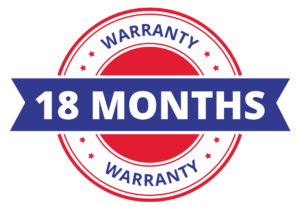As temperatures drop and weather conditions change, fall is the perfect time to prepare your car for the colder months ahead. A little preventative maintenance now can help avoid breakdowns, improve safety, and keep your car running smoothly through the season.
This guide covers essential fall car maintenance tips to protect your vehicle and ensure it’s ready for changing weather.
1. Check and Replace Worn Tires
With rain, wet leaves, and colder temperatures, tire performance becomes even more important in the fall.
- Check tire tread depth using the penny test. If you can see the top of Lincoln’s head, it’s time to replace your tires.
- Inspect for uneven wear, cracks, or bulges.
- Keep tire pressure at the manufacturer’s recommended level—cooler temperatures can cause it to drop.
- Consider switching to all-season or winter tires if you drive in snowy or icy conditions.
2. Test Your Battery
Cold weather can drain battery power, making it harder to start your car.
- Look for corrosion on battery terminals and clean them with a wire brush.
- Have a mechanic test the battery’s charge level—if it’s weak, consider replacing it before winter.
- If your battery is more than three years old, start planning for a replacement.
3. Inspect and Replace Wiper Blades
With fall rain and early frost, you’ll need clear visibility while driving.
- Check for streaking, skipping, or cracked rubber on your wiper blades.
- Replace wipers if they aren’t clearing the windshield effectively.
- Fill up on winter-rated windshield washer fluid to prevent freezing.
4. Check Your Heater and Defroster
As temperatures drop, you’ll rely more on your heater and defroster for comfort and visibility.
- Test the heater to ensure it’s warming up properly.
- Make sure the defroster clears fog and condensation quickly.
- If you notice weak airflow or strange smells, have your cabin air filter checked.
5. Top Off and Replace Fluids
Colder weather affects your car’s fluids, so it’s important to check and top them off.
- Engine oil – If it’s been a while since your last oil change, replace it with cold-weather-friendly oil.
- Coolant/antifreeze – Ensure you have the proper antifreeze mixture to prevent freezing.
- Brake fluid – Check for low levels and top off if needed.
- Transmission fluid and power steering fluid – Inspect and replace if dirty or low.
6. Test Your Lights
With shorter days and longer nights, good lighting is essential for fall driving safety.
- Check headlights, brake lights, turn signals, and fog lights.
- Replace dim or burnt-out bulbs immediately.
- Clean your headlight lenses for maximum visibility.
7. Prepare an Emergency Kit
Fall weather can be unpredictable, so it’s best to keep an emergency kit in your car.
Your kit should include:
- Flashlight with extra batteries
- Jumper cables
- Tire pressure gauge and sealant
- Basic tool kit
- First-aid kit
- Extra blankets and warm clothing
- Non-perishable snacks and bottled water
8. Get a Pre-Winter Inspection
Before the coldest months arrive, schedule a general inspection with a trusted mechanic.
- Have them check your brakes, belts, and hoses for signs of wear.
- Make sure your exhaust system is free of leaks to avoid dangerous carbon monoxide buildup.
- Ask about a tune-up if your car has been running rough.
Final Thoughts
Preparing your car for fall helps prevent breakdowns, improve safety, and ensure a smooth ride all season long. Regular maintenance now can save you money on repairs later and keep your vehicle in top condition.
If you’re looking for a reliable, well-maintained used car, check out our Buy Here Pay Here dealership options today.









